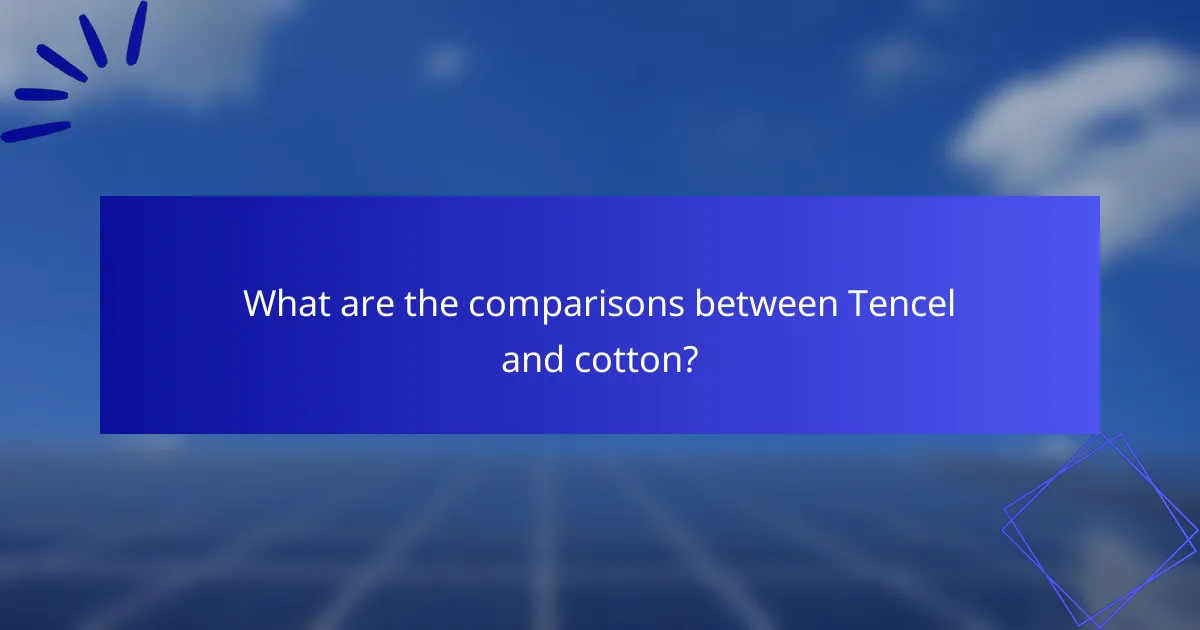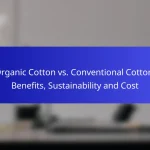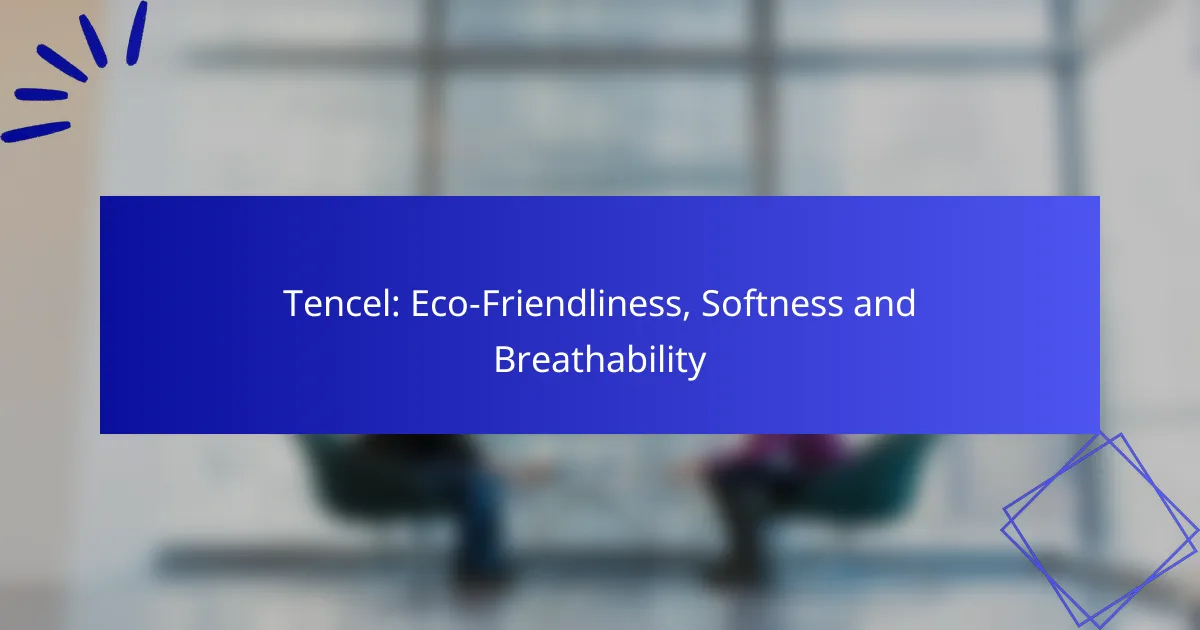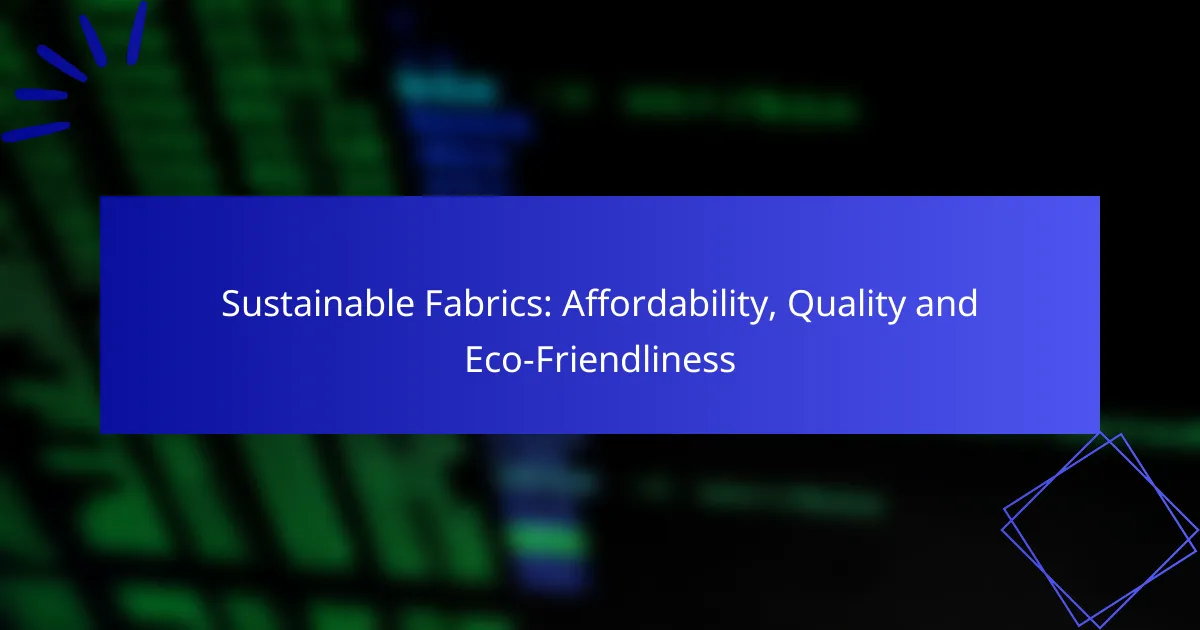Tencel is a sustainable fabric known for its eco-friendliness, achieved through responsible sourcing and a closed-loop production process. Renowned for its exceptional softness, Tencel provides a luxurious feel that enhances comfort while being gentle on the skin. Additionally, its unique fiber structure promotes breathability, making it an ideal choice for textiles that require effective moisture management and temperature control.

How is Tencel eco-friendly?
Tencel is eco-friendly due to its sustainable sourcing, closed-loop production process, and biodegradability. These factors contribute to its minimal environmental impact compared to conventional fabrics.
Sustainable sourcing from eucalyptus trees
Tencel is primarily made from eucalyptus trees, which are grown in sustainably managed forests. These trees require less water and no pesticides, making them a more environmentally friendly option than traditional cotton. The fast growth rate of eucalyptus allows for quicker harvesting and replenishment of resources.
Additionally, many Tencel producers adhere to strict sustainability certifications, ensuring responsible forestry practices. This sourcing approach helps maintain biodiversity and reduces the carbon footprint associated with fabric production.
Closed-loop production process
The production of Tencel utilizes a closed-loop process that recycles water and solvents used in manufacturing. This method significantly reduces waste and pollution, as nearly all chemicals are captured and reused, minimizing their release into the environment. As a result, the process is more efficient and less harmful than many conventional textile manufacturing methods.
Moreover, this closed-loop system aligns with global sustainability goals, as it conserves resources and lowers energy consumption during production. This eco-conscious approach is a key selling point for consumers seeking environmentally friendly textiles.
Biodegradable material
Tencel is biodegradable, meaning it can decompose naturally without harming the environment. When disposed of, Tencel fibers break down into non-toxic components, returning nutrients to the soil. This contrasts sharply with synthetic fabrics, which can take hundreds of years to decompose.
For consumers, choosing Tencel products contributes to a circular economy, where materials are reused and waste is minimized. This characteristic makes Tencel an appealing option for those looking to reduce their ecological footprint through their clothing choices.

What are the benefits of Tencel’s softness?
Tencel is renowned for its exceptional softness, making it a popular choice for clothing and bedding. This fabric offers a luxurious feel that enhances comfort while being gentle on the skin.
Silky texture comparable to silk
Tencel has a silky texture that rivals that of silk, providing a smooth and luxurious touch. This softness is achieved through the fiber’s unique production process, which involves dissolving wood pulp and regenerating it into fibers.
The result is a fabric that drapes beautifully and feels soft against the skin, making it ideal for garments like blouses, dresses, and sleepwear. Its elegant appearance and feel make it a preferred choice for high-end fashion and home textiles.
Gentle on sensitive skin
Tencel is particularly beneficial for individuals with sensitive skin due to its hypoallergenic properties. The fibers are less likely to irritate the skin compared to other materials, making Tencel a suitable option for those prone to allergies or skin conditions.
Additionally, Tencel’s moisture-wicking capabilities help keep the skin dry and comfortable, further reducing the risk of irritation. This makes it a popular choice for activewear and undergarments.
Reduces friction and irritation
The smooth surface of Tencel fibers minimizes friction against the skin, which can help prevent chafing and irritation. This characteristic is especially important for clothing items that are worn for extended periods, such as sleepwear and loungewear.
By choosing Tencel, consumers can enjoy a soft, breathable fabric that enhances comfort while reducing the likelihood of skin issues. This makes it an excellent option for everyday wear and for those who prioritize skin health.

How does Tencel promote breathability?
Tencel promotes breathability through its unique fiber structure, which enhances moisture management and airflow. This makes it an ideal choice for clothing and textiles that require comfort and temperature control.
Moisture-wicking properties
Tencel fibers are designed to absorb moisture efficiently, pulling sweat away from the skin. This moisture-wicking ability helps keep the body dry, reducing the risk of discomfort and irritation during physical activities. As a result, Tencel garments are particularly popular for activewear and bedding.
Temperature regulation
One of the key features of Tencel is its ability to regulate temperature. The fibers can adapt to the body’s temperature, providing a cooling effect in warm conditions and warmth in cooler environments. This adaptability makes Tencel suitable for year-round wear, offering comfort in various climates.
Enhanced airflow
The structure of Tencel fibers allows for improved airflow, which contributes to its breathability. This enhanced airflow helps to dissipate heat, preventing overheating during physical exertion. When choosing Tencel products, look for those with a loose weave or knit to maximize airflow benefits.

What are the best Tencel products available?
The best Tencel products combine eco-friendliness, softness, and breathability, making them ideal for various uses. Popular options include Tencel sheets, clothing, and towels from reputable brands known for their quality and sustainability practices.
Tencel sheets from Brooklinen
Brooklinen offers luxurious Tencel sheets that provide a soft and silky feel, perfect for a comfortable night’s sleep. These sheets are made from sustainably sourced Tencel fibers, which are known for their moisture-wicking properties, helping to regulate temperature and keep you cool.
When choosing Brooklinen Tencel sheets, consider the thread count and color options available. A higher thread count typically indicates a softer feel, while a variety of colors can match your bedroom decor. Look for sets that include fitted sheets, flat sheets, and pillowcases for a complete bedding solution.
Tencel clothing from Eileen Fisher
Eileen Fisher’s Tencel clothing line emphasizes comfort and style, featuring garments that are both breathable and eco-conscious. Tencel fibers in their clothing provide a soft drape and are gentle on the skin, making them suitable for everyday wear.
When selecting Tencel clothing from Eileen Fisher, pay attention to the fit and versatility of the pieces. Many items are designed for layering, allowing you to create various outfits. Additionally, consider the care instructions, as Tencel garments often require gentle washing to maintain their quality.
Tencel towels from Parachute Home
Parachute Home’s Tencel towels are designed to be ultra-absorbent and quick-drying, making them a practical choice for your bathroom. The Tencel fibers contribute to a soft texture that feels luxurious against the skin while also being environmentally friendly.
When choosing Tencel towels from Parachute, consider the size and weight of the towels. Larger towels may offer more coverage, while lighter options are easier to handle and dry faster. Look for sets that include bath towels, hand towels, and washcloths for a coordinated bathroom aesthetic.

How to care for Tencel fabrics?
Caring for Tencel fabrics is straightforward and helps maintain their eco-friendliness, softness, and breathability. Proper washing and drying techniques can extend the life of your Tencel garments while preserving their quality.
Machine wash on gentle cycle
When washing Tencel fabrics, always opt for a gentle cycle on your washing machine. This setting minimizes agitation, which can help prevent damage to the fibers and maintain the fabric’s softness.
It’s advisable to wash Tencel items in cold water, as hot water can lead to shrinkage and affect the fabric’s integrity. If possible, wash similar colors together to avoid any dye transfer.
Use mild detergent
Using a mild detergent is crucial for Tencel care. Harsh chemicals can strip the fibers of their natural properties, leading to a loss of softness and breathability.
Look for detergents labeled as suitable for delicate fabrics or those that are free from bleach and fabric softeners. These options will help preserve the eco-friendly nature of Tencel while ensuring a thorough clean.
Avoid high heat drying
High heat drying can damage Tencel fabrics, causing them to shrink or lose their shape. Instead, opt for air drying or use a low heat setting if you must use a dryer.
To air dry, lay the garments flat on a clean, dry surface or hang them up. This method not only protects the fabric but also helps maintain its breathability and softness over time.

What are the comparisons between Tencel and cotton?
Tencel and cotton are both popular fabrics, but they differ significantly in terms of eco-friendliness, softness, and breathability. Tencel, made from sustainably sourced wood pulp, is often considered more environmentally friendly than conventional cotton, which typically requires more water and pesticides.
Eco-Friendliness
Tencel is produced through a closed-loop process that recycles water and solvents, minimizing waste and environmental impact. In contrast, conventional cotton farming often relies on synthetic fertilizers and pesticides, which can harm ecosystems and water sources. Organic cotton is a more sustainable option, but it still requires significant water resources.
Softness
Tencel is renowned for its luxurious softness, often feeling smoother than cotton against the skin. This softness is due to its fiber structure, which allows for a silky texture. While high-quality cotton can also be soft, it may not consistently match the comfort level of Tencel, especially after multiple washes.
Breathability
Tencel fibers are highly breathable, allowing for excellent moisture management and temperature regulation. This makes Tencel garments ideal for warm climates or active wear. Cotton is also breathable but can retain moisture, which may lead to discomfort in humid conditions. For optimal breathability, look for lightweight Tencel blends or high-thread-count cotton options.










